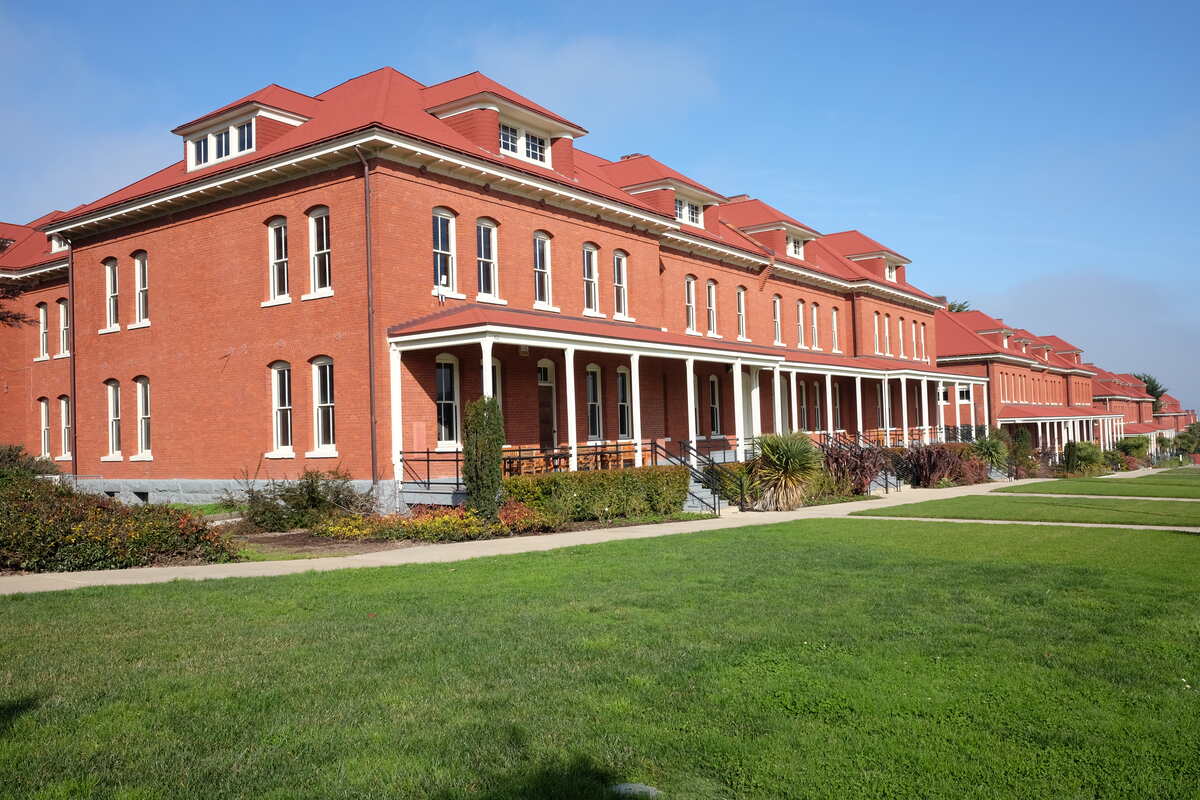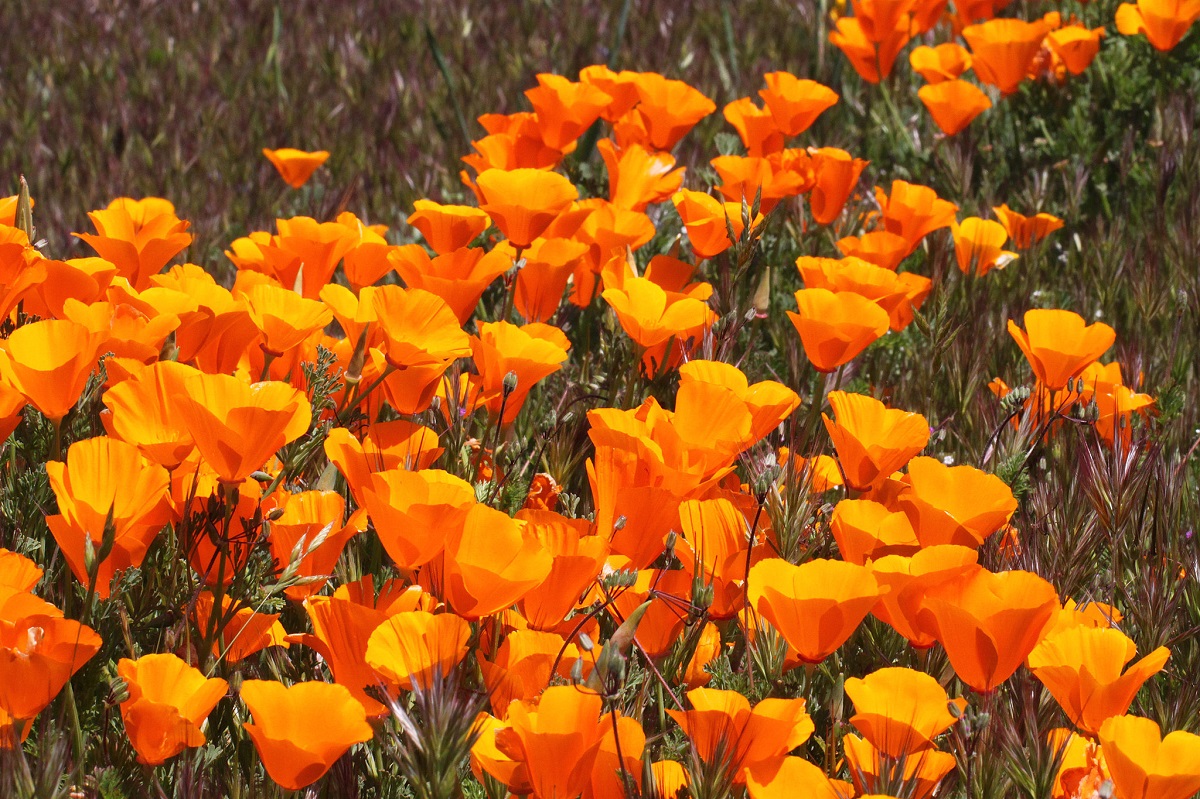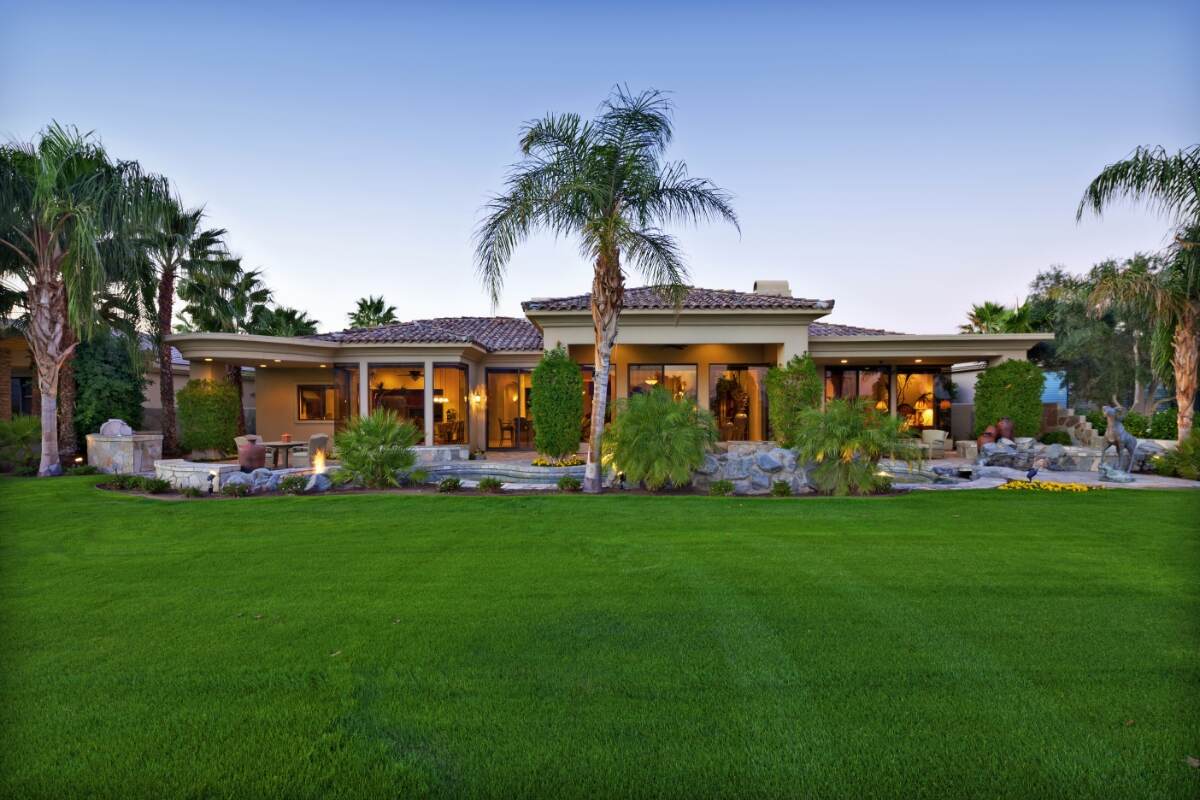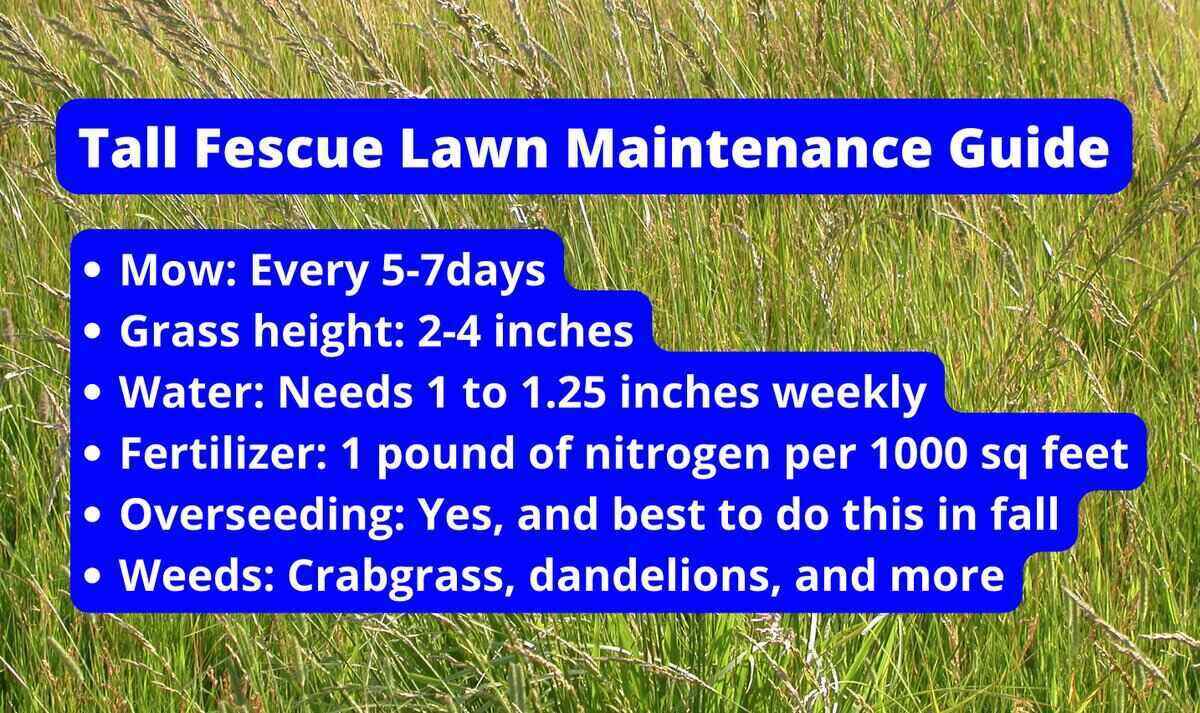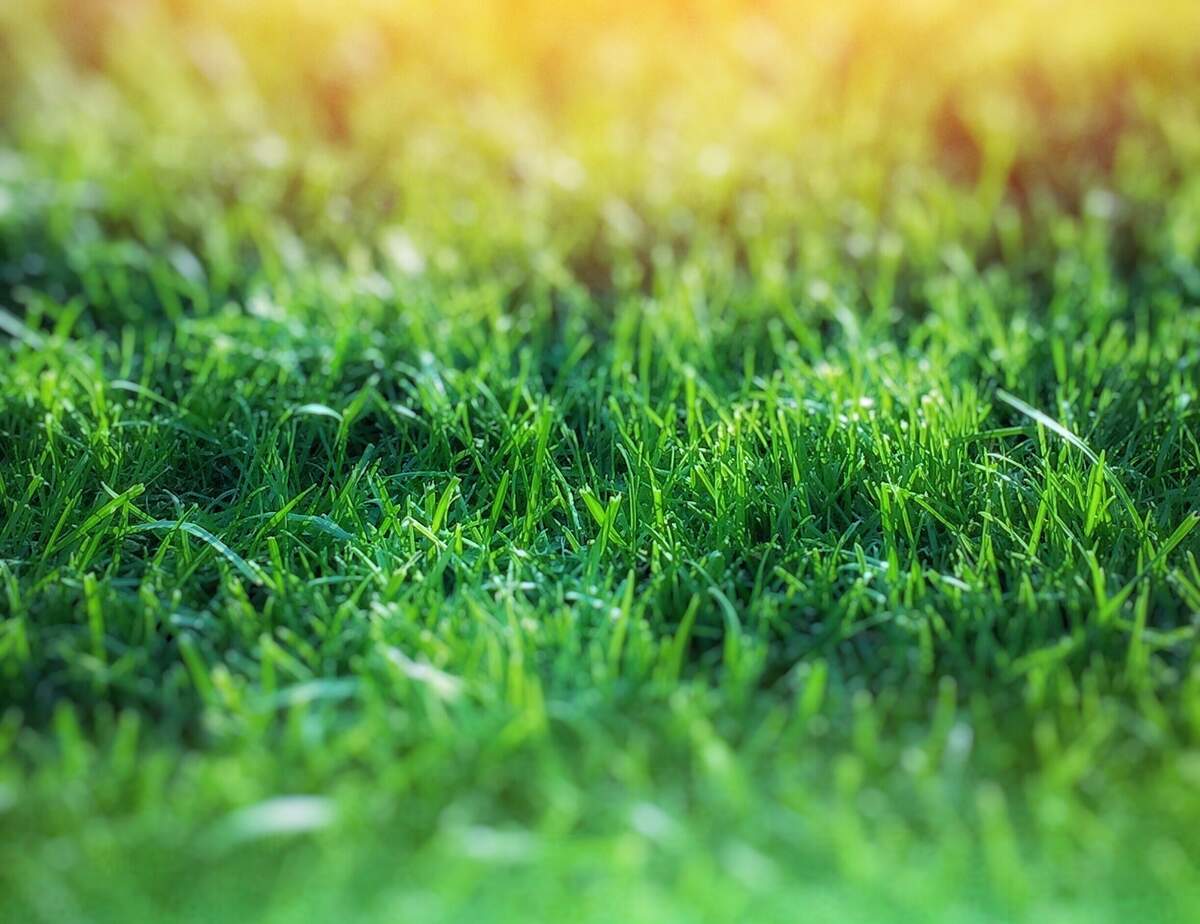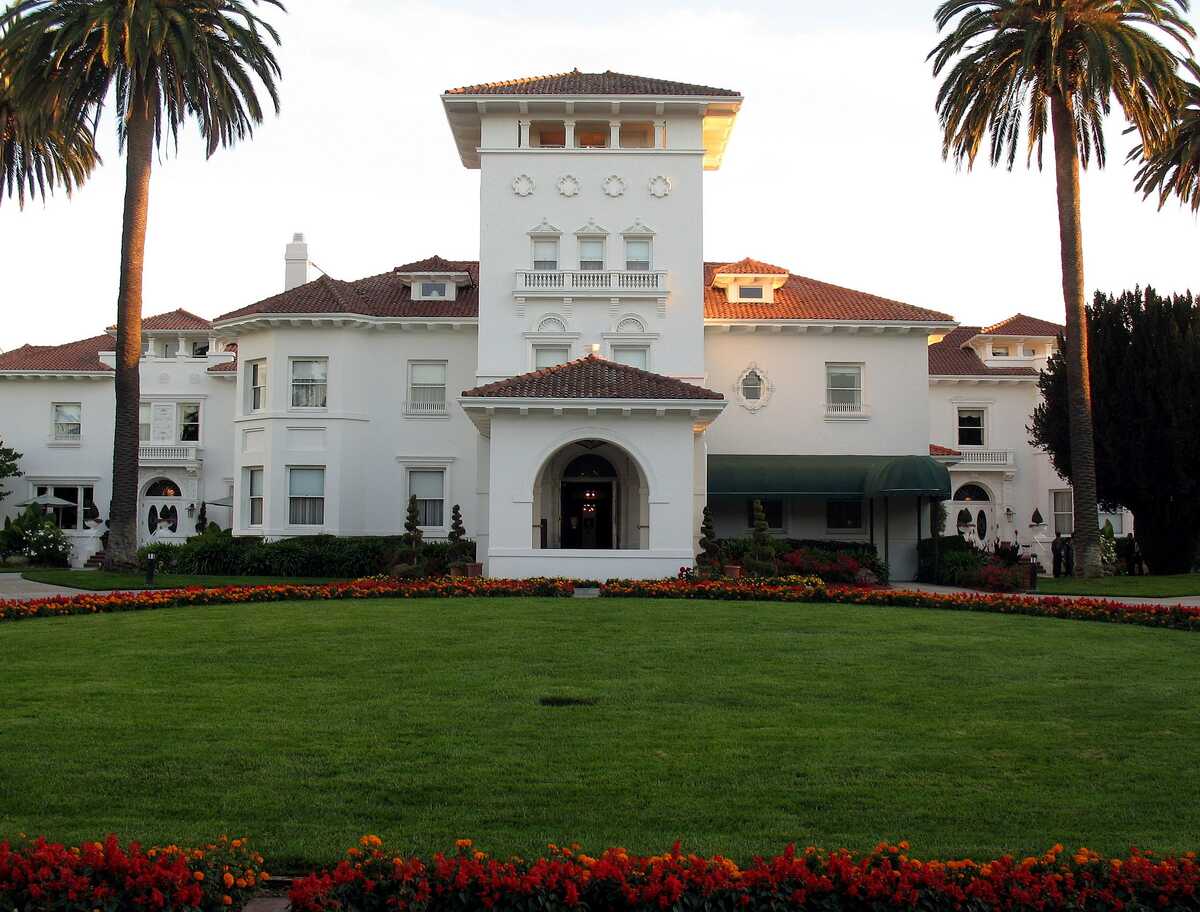
Of course, you know the way, but do you know how to grow and care for a beautiful lawn in San Jose? That’s where we can help. Let’s start with what makes for a stunning field of green — spotlighting the four best grass types in San Jose and detailing the shade tolerance, drought resistance, needed maintenance, and recommended mowing height for each.
1. Tall Fescue Grass
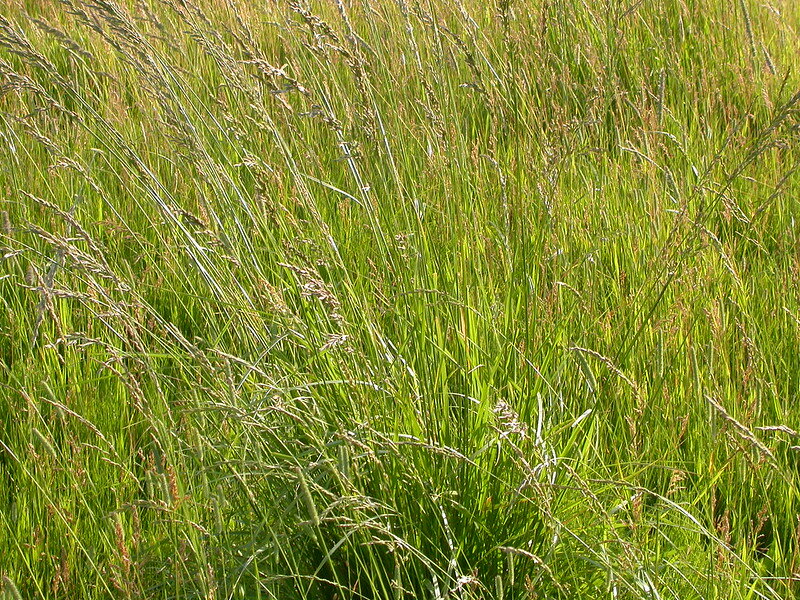
Tall fescue grass (Festuca arundinacea), with its broad, deep green blades, is one of the most popular turfs in California. This type of turf is low maintenance and salt-tolerant, making it a good choice for coastal areas. Tall fescue also grows the best during the cooler and wetter winter months.
- Classification: Cool-season grass
- Spreads by: Tall fescue grass grows in clumps and spreads through tillers (vertical shoots that extend from the base of the plant).
- Shade tolerance: Medium. The moisture-absorbency of tall fescue grass makes it shade-tolerant and resistant to anything your dogs leave behind.
- Drought tolerance: Medium. Tall fescue grass will go dormant during dry spells.
- Foot traffic tolerance: High, thanks to a deep root system.
- Maintenance needs: Mow weekly, though less often during a drought to prevent stressing your lawn. Treat weeds and pests as necessary. Fertilize and add nitrogen routinely.
- Recommended mowing height: Mow to 3 ¼ to 4 inches. Tall fescue lies dormant during hot and dry months and won’t require much water or mowing. Always follow the one-third rule when cutting your grass.
Grass Seed Options:
– Triple-Play Tall Fescue Grass Seed Blend (5000 sq ft)
– Eretz Kentucky 31 K31 Tall Fescue Grass Seed (choose your size)
– Pennington The Rebels Tall Fescue Grass Seed Mix (7 lb.)
2. Native Bentgrass
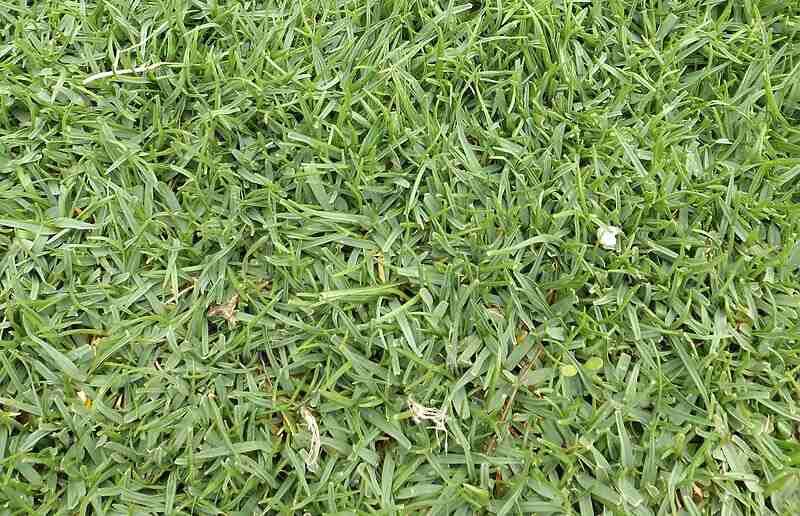
Also known as seashore bentgrass (Agrostis pallens), native bentgrass is a cool-season grass native to California and used as an alternative to turfgrass. It can withstand foot traffic and has deep green leaves with a medium texture. You may either mow it for a manicured look or let it grow long for a meadow effect.
- Classification: Cool-season grass
- Spreads by: Seashore bentgrass spreads with both rhizomes and seeds; however, due to its slower growth, it is usually planted as sod in lawns.
- Shade tolerance: Bentgrass grows in full sun or partial shade, so it will thrive even if you have a lot of trees around.
- Drought tolerance: This turf is highly drought tolerant and stays green year-round with some summer watering.
- Foot traffic tolerance: Due to its self-repairing rhizomes, Agrostis pallens can endure foot traffic and has good wear recovery.
- Maintenance needs: Agrostis pallens needs half the water that non-native grasses require. Because natural bentgrass grows slowly, it might be challenging to establish a lawn from seed.
- Recommended mowing height: To shade the soil and keep roots cool during hot weather, cut your bentgrass to a height of about 4 inches.
3. Bermudagrass
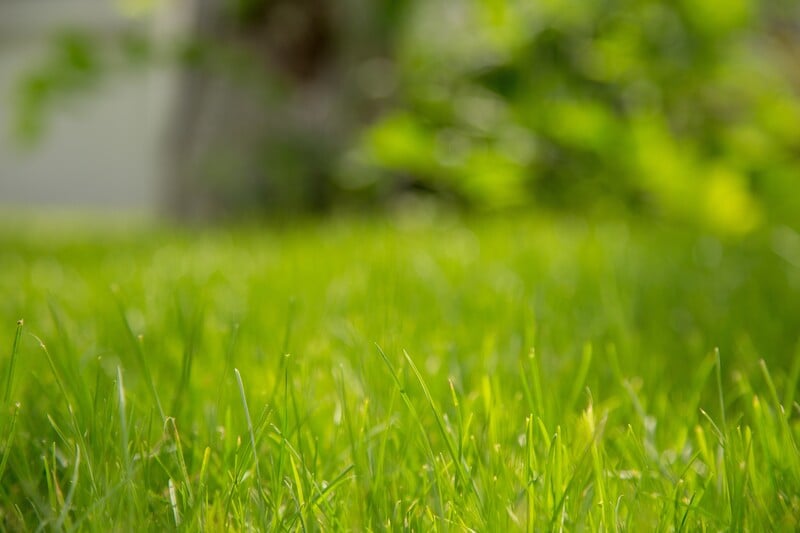
Bermudagrass, with a coarse texture and dark green color, is a hardy lawn type that rebounds quickly. This lawn type grows actively from late spring through the hot summer months. It can grow roots up to six feet deep, allowing it to flourish in dry circumstances, and will grow in the transition zone of the Bay Area.
- Classification: Warm-season grass
- Spreads by: Bermudagrass spreads laterally with both stolons and rhizomes.
- Shade tolerance: Low, as this turf prefers open areas with lots of sun.
- Drought tolerance: Bermudagrass is very drought tolerant.
- Foot traffic tolerance: It is a grass that withstands heavy use and recovers quickly from stress.
- Maintenance needs: Bermudagrass is higher-maintenance than other grass types, especially if you plant a hybrid variety. It requires careful nutrient balancing and may need pesticides and herbicides.
- Recommended mowing height: Bermudagrass should be cut about once a week and kept to a height of about 1.5 to 2.5 inches.
Grass Seed Options:
– Pennington Bermudagrass Bare Spot (5 lb. bag)
– Pennington Smart Seed Bermudagrass Mix (8.75-lb. bag)
– Scotts Turf Builder Bermudagrass (10-lb. bag)
– Hancock Seed Co. Bermudagrass (50-lb. bag)
4. Perennial Ryegrass
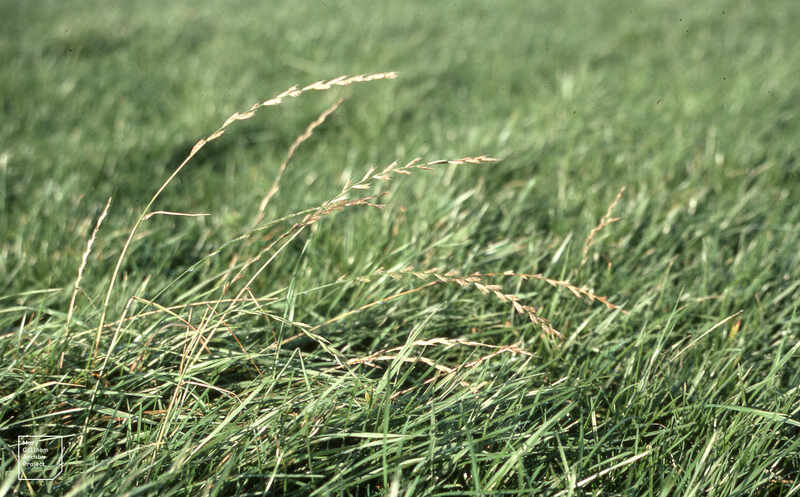
Photo Credit: Dr Mary Gillham Archive Project / Flickr / CC BY 2.0
Perennial ryegrass, which tolerates the cooler months in the Bay Area, is another popular San Jose lawn type. Because of its reasonably coarse leaves, this turf variety can be tough to shear with older mowers or dull blades. With sharp edges, this paler green grass is easy to maintain.
- Classification: Cool-season grass
- Spreads by: Perennial ryegrass is a bunch-type grass that can appear patchy, but with the quick establishment and rapid growth, it’s easy to achieve even coverage.
- Shade tolerance: Somewhat tolerant of shade, but will have improved tolerance when blended in a seed mix with other grasses.
- Drought tolerance: Low, needs frequent watering.
- Foot traffic tolerance: Overall, perennial ryegrass handles foot traffic well.
- Maintenance needs: This variety of grass is naturally resistant to insects and disease, making taking care of it easy. It is moderately salt-tolerant.
- Recommended mowing height: Perennial ryegrass is best mowed weekly to a height between 1 and 2 inches.
Grass Seed Options:
– Outsidepride Perennial Ryegrass Seed (5 lbs.)
– Eretz ProTurf Perennial Ryegrass Fine Lawn Seed (choose your size)
How to Choose the Best Grass for Your Bay Area Lawn
Consider how much time you want to spend each week working on your lawn before choosing a grass type. Trimming, feeding, and watering are all time-consuming chores. Before choosing a grass species for your lasting lawn, assess it and your needs.
In San Jose lawns, a blend of different seed types may be your best course of action. For example, perennial ryegrass works well for overseeding Bermudagrass in the winter.
Maintenance Needs
- Moderate to high maintenance: Bermudagrass, tall fescue grass
- Low to moderate maintenance: Native bentgrass, perennial ryegrass
Shade Tolerance
- Moderate to high tolerance: Tall fescue grass, native bentgrass
- Low to moderate tolerance: Bermudagrass, perennial ryegrass
Drought Tolerance
- Moderate to high tolerance: Native bentgrass, Bermudagrass
- Low to moderate tolerance: Tall fescue grass, perennial ryegrass
Foot Traffic Durability
All four of the Bay Area-friendly grass species boast high durability and self-repairing characteristics.
Moderate to heavy foot traffic: Tall fescue grass, native bentgrass, Bermudagrass, perennial ryegrass.
The Way to a Healthy San Jose Lawn
San Jose’s near-perfect weather (generally warm all year but with hot, dry summers) and water restrictions present some challenges when trying to grow and maintain a landscape suitable for your postcard life.
Whatever lawn type you choose, with a little TLC, your family will have a majestic lawn in which you can relax and enjoy the California sun.
Need help maintaining your lawn? Visit our San Jose lawn care page to get in touch with a professional who can take this time-consuming chore off your weekend to-do list.
LawnStarter participates in the Amazon Services LLC Associates Program, an affiliate advertising program. LawnStarter earns revenue from products promoted in this article.
Main Image Credit: Sanfranman59 / Wikimedia Commons / CC BY-SA 3.0
